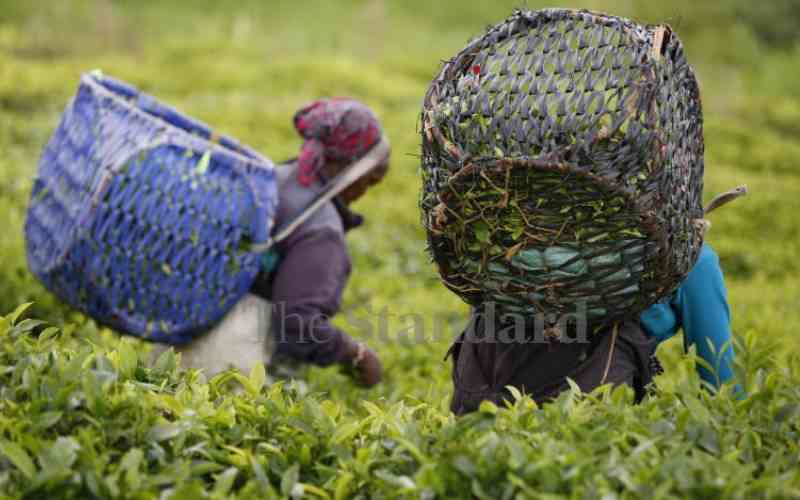The Kenyan sugar sector has been riddled by mismanagement, cheap sugar imports, high operational costs and poor cane quality.
To revive the sugar sector, it is important to recognize that agriculture is and will continue to play a key role in realizing the twin objectives of poverty reduction and shared prosperity as enshrined in our Constitution.
Privatization of the sugar sector is on process, this is one step in the right direction. The government of Kenya is targeting strategic investors to buy it’s 51 per cent holding in the sugar milling companies while out growers and employees are to get a stake of 24 per cent. This is likely to curb on mismanagement.
The negotiations for extension of the COMESA safeguard to allow the country put the sugar sector on competitive range is a good move though short term. This is meant to protect the sugar sector from cheap imports that would render local sugar expensive.
The sugar industry in Kenya cannot be revamped when sugar cane farmers remain unpaid. The sugar cane farmers need to be assured of payment for their hard work and sacrifice.
The Kenyan government needs to come up with policies and regulations that will address the high cost of agricultural inputs. A subsidy scheme to cushion farmers against high input costs can be introduced. The lowering of these costs for sugar cane farmers will definitely change the sugar sector for good.
The mills should diversify into ethanol distillation, co-generation of power and other forms of bio-fuel energy production to reduce over reliance on revenue from sugar production.
With so many cane varieties, the sugar sector should evaluate all the varieties and adopt a quality, fast maturing and viable cane.
It is feared that Kenya’s sugar sector cannot withstand unregulated sugar imports from the COMESA market due to inefficiencies in the sector that have rendered it largely uncompetitive. The sugar milling companies need to be equipped with modern equipment for efficient milling of sugar cane.
The sugar prices in Kenya are too high as compared to other sugar processing countries like Uganda and Tanzania. A drop in prices will help in competing against COMESA prices, hence a reduction in cheap sugar imports.
Many of sugar cane farmers are contracted by mills and it is only the mills that are mandated to harvest the sugar cane. In case of any delay, the farmers get huge losses as the cane stays longer in the farm and as a result, they reduce quality tonnage of the cane. The mills should have a proper harvesting schedule to avoid such costly delays.
Millions of shillings are lost when sugar canes weighing hundreds of kilogrammes fall off during transit from farms to mills by tractors or trailers. The sugar cane transporters should not overload trailers and use mesh wire in their trailers to reduce spilling.
The major contributor to the high cost of sugar cane production relates to the cost of cane transportation from farms to mills. The Kenya Sugar Board (KSB) should come up with a mechanism of reducing sugar cane transport costs to boost farmers’ earnings.
The annual closure of milling factories for servicing of machines disrupts the farmers’ calendar of activities. The milling factories should purchase modern machines with greater processing capacity and avoid full closure for servicing.
More research on better ways or methods of cane husbandry to be done. A specific research and development unit should be established.
Stay informed. Subscribe to our newsletter
Brazil is among the world leaders in production of sugar. Kenya should work closely with Brazil to borrow more tips for high sugar productivity.
With all these factors in place, many Kenyans will opt to engage in sugar cane farming thereby increasing sugar cane plantation acreage which is currently less than 10 per cent.
 The Standard Group Plc is a
multi-media organization with investments in media platforms spanning newspaper
print operations, television, radio broadcasting, digital and online services. The
Standard Group is recognized as a leading multi-media house in Kenya with a key
influence in matters of national and international interest.
The Standard Group Plc is a
multi-media organization with investments in media platforms spanning newspaper
print operations, television, radio broadcasting, digital and online services. The
Standard Group is recognized as a leading multi-media house in Kenya with a key
influence in matters of national and international interest.
 The Standard Group Plc is a
multi-media organization with investments in media platforms spanning newspaper
print operations, television, radio broadcasting, digital and online services. The
Standard Group is recognized as a leading multi-media house in Kenya with a key
influence in matters of national and international interest.
The Standard Group Plc is a
multi-media organization with investments in media platforms spanning newspaper
print operations, television, radio broadcasting, digital and online services. The
Standard Group is recognized as a leading multi-media house in Kenya with a key
influence in matters of national and international interest.








